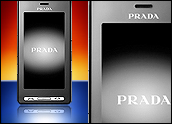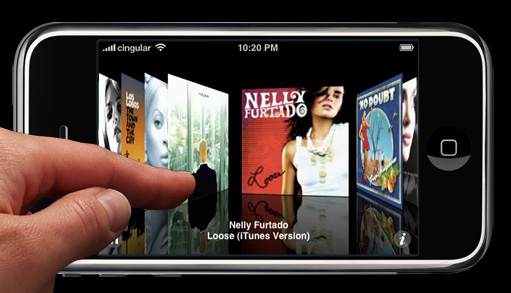Mobile Touchscreens Set To Be Hot In 07
5 February 2007 by axxxr
The introduction of the Apple iPhone later this year will see touch screens become "Fashionable" on mobile phones.
While we allready have touchscreens on the likes of the Sony Ericsson M600i phone we have seen during the past week or so announcements from Apple, Samsung, and LG, showcasing new handset models that feature touchscreens as the primary input device. Although 2006 will be remembered as the year that thin was in, 2007 is shaping up to be breakout year for touchscreens. The touchscreen has suddenly become the interface of choice for manufacturers wanting to make a trendy splash with their mobile handsets. It also set to spill down into remote controls and portable pads that can be used for home automation. Although touchscreens in cellular handsets are not a new technology (models offering a touchscreen have been commercially available for several years), previous handsets did not have the benefit of the market buzz from a high-profile product launch such as the iPhone. Consumer awareness of touchscreens in cellular handsets has dramatically increased since the MacWorld show, and manufacturers are racing to take advantage of the media attention. Touchscreens do offer significant benefits for manufacturers who are struggling to differentiate their product from competitors. First and foremost, touchscreens offer a novel user interface for the consumer. Manufacturers and operators are banking on this novelty to drive sales. A second key benefit is the increased screen size that can enhance multimedia applications. Operators with an interest in providing Mobile TV and other multimedia content have been quick to recognize the appeal that this will have for consumers. These benefits are offset by some potential drawbacks. Naturally, the first is cost. A touchscreen interface is significantly more expensive than using a standard keypad, increasing the cost of the BOM. However, the increased demand from OEM's should help to bring those costs back down as more touchscreen handsets hit the market. The second drawback is also very familiar - power use. Touchscreens draw more power than physical keypads, increasing the demands for an already scarce resource. Finally, with an unproven track record, it is unclear how strongly consumers will embrace the touchscreen as a primary input technology, especially with the lack of tactile response. Although Samsung has announced its SCH-W5559 handset will feature tactile feedback (provided by Immersion's VibeTonz technology), the lack of tactile feedback in most handset models could be a significant drawback. Although handset manufacturers and operators are embracing the newfound popularity of the touchscreen, traditional keypads will continue to be the mainstay for the foreseeable future. Cost, ease-of-use, and power efficiency will all be strong motivators for manufacturers to continue to invest in traditional keypads. source:smarthouse
Comments On 6 Feb 15:44 Coelers wrote IPhone just Looks so FREAKIN Awesome (L) On 5 Feb 23:07 antichrist wrote since 61% of brits use only four features on their mobile: phone calls, text messages, alarm clock and camera ,while two fifths don't even know if their mobile phone has a camera function, yeah... strong motivations for manufacturers to continue to invest in traditional keypads |








 RSS feed
RSS feed